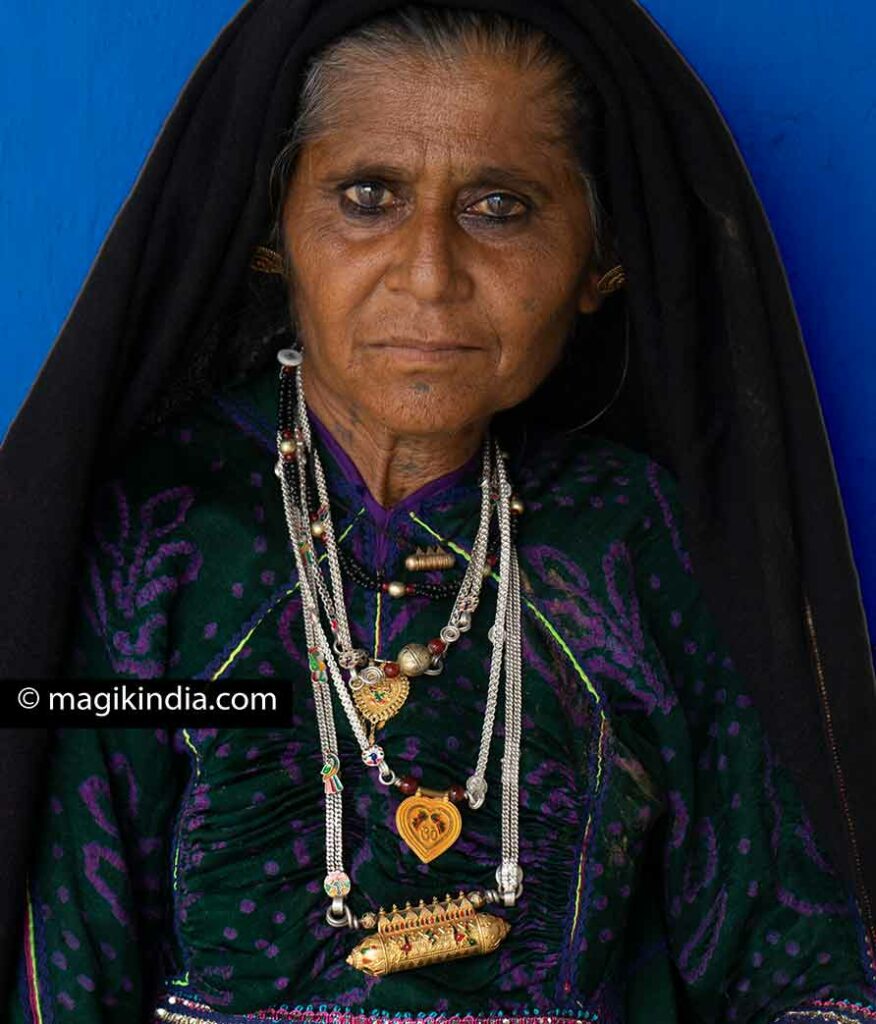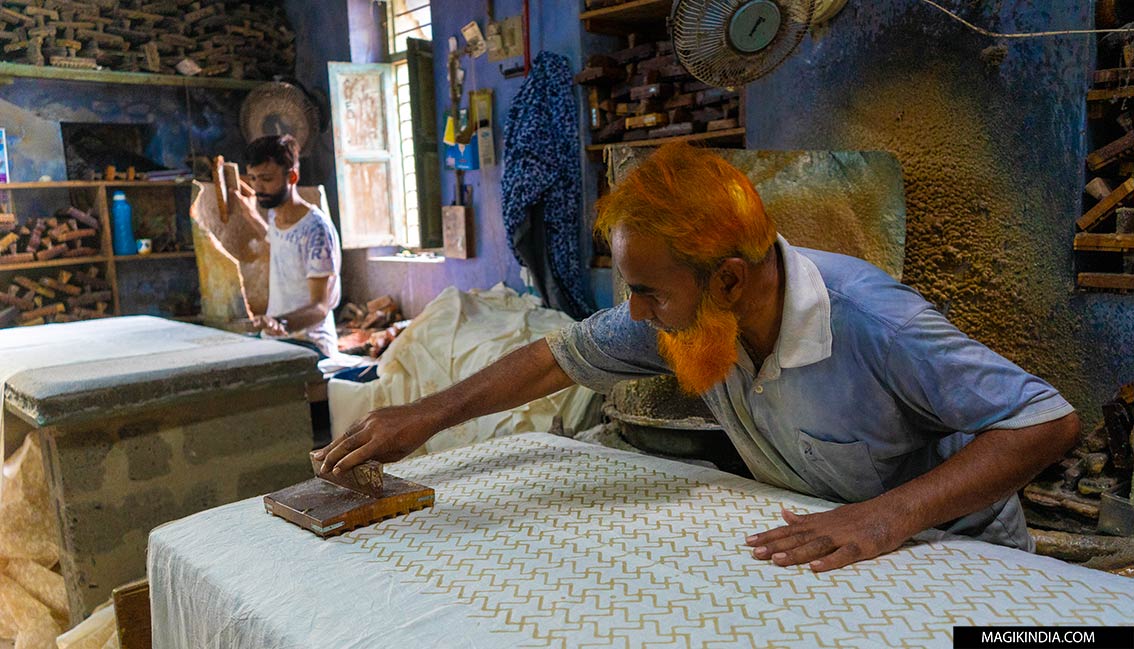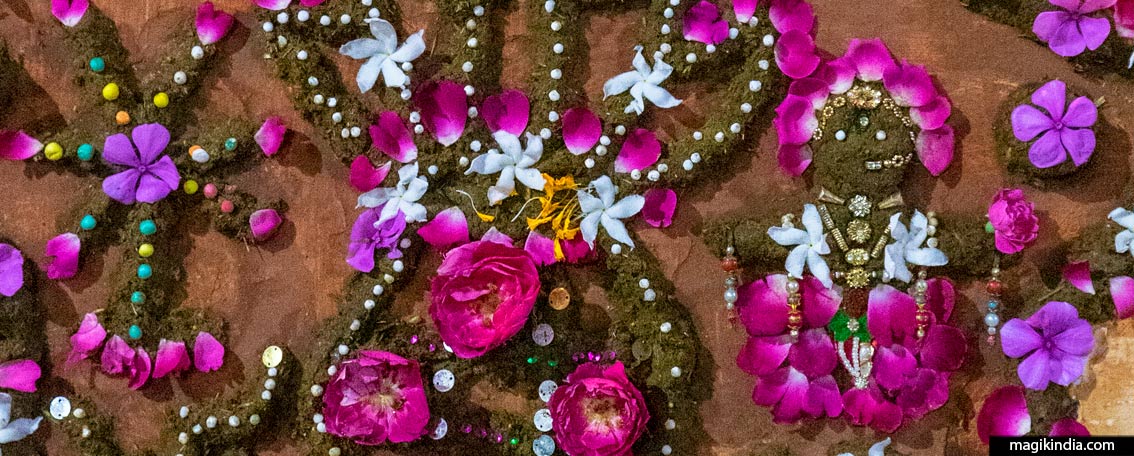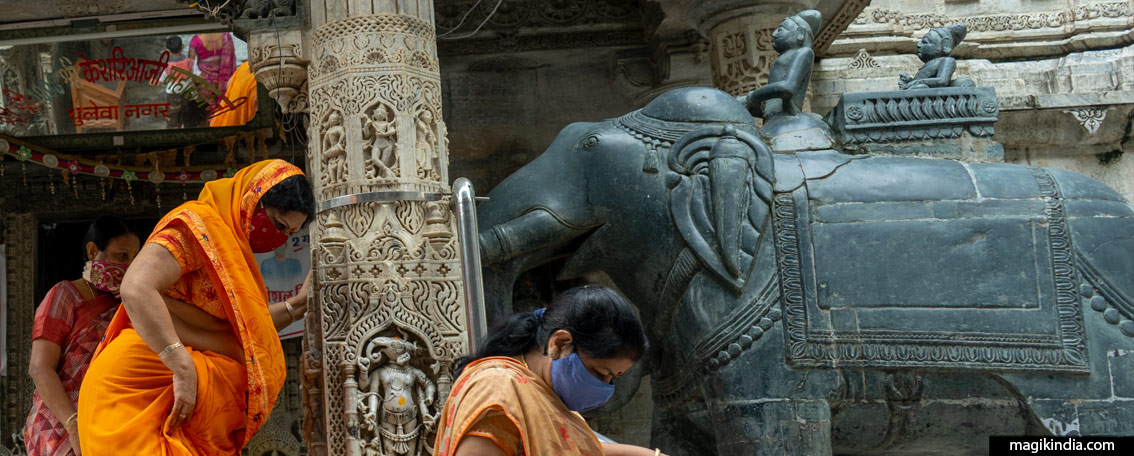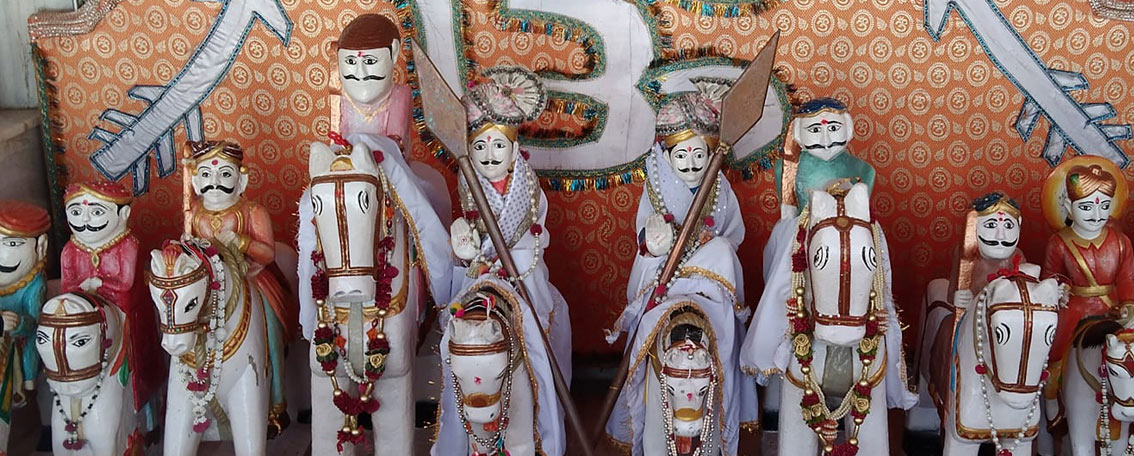
The Fascinating People of Kutch, Gujarat
Kutch (Kachchh), is an amazing district located in the northwest of the state of Gujarat. The proximity to Sindh and the region’s ideal location on a navigable stretch of the Arabian Sea have made the district of Kutch the hub of cultural exchange which is reflected in its motley population. There are about fifty different ethnic groups in Kutch, without counting the many subdivisions, which is to say that it is impossible to mention them all in this article, so my choice fell on the most emblematic people of the region, namely Meghwals, Jats, Ahirs and Rabaris.
Meghwals
The Meghwal community (also known as Megh and Meghraj) has little written history that can trace its origin.
What we do know is that the Meghwals claim descent from the Rishi Megh, a saint who had the power to make rain fall through his prayers. The word “Meghwal” is indeed derived from “Meghwar”, “Megh” meaning cloud or rain in Sanskrit and “war”, a group. Thus, “Meghwal” refers to a people who belong to the Megh lineage.

The Meghwals are said to come from Sindh, a region that was once part of India before the 1947 partition and is now located in southern Pakistan, surrounded by Balochistan to the west, Punjab to the north, Rajasthan to the east. and finally from the Rann of Kutch to the south. This same community is also found in the Kashmir valley, in Punjab and in Rajasthan.
With the advancement of education in India, an increasing number of Meghwals leave to work in the big megalopolises but, traditionally, their activities were agriculture, animal husbandry, weaving and embroidery.
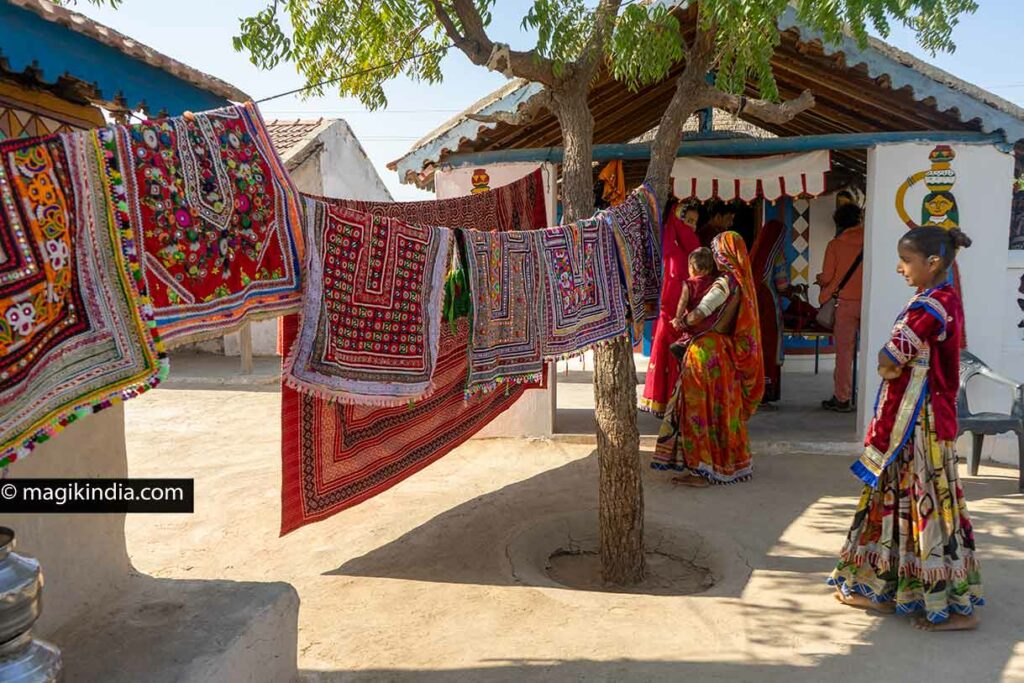
However, there are still a few places in the Kutch district, notably in the Banni region, where we can still observe a handful of typical villages (although a bit touristy) and the art of Meghwal embroidery.
The women of this community wear flamboyant traditional outfits generally in shades of red (obtained using a local pigment) with an exuberance of embroidery and the incorporation of aabhla (small round mirrors). Embroidered clothes were previously the wedding trousseau of young Meghwal girls.

The jewelery of Meghwal women is equally remarkable, in particular their large gold nose ring often adorned with precious stones such as rubies, sapphires and emeralds. It is given as a wedding gift by the bride’s mother-in-law.
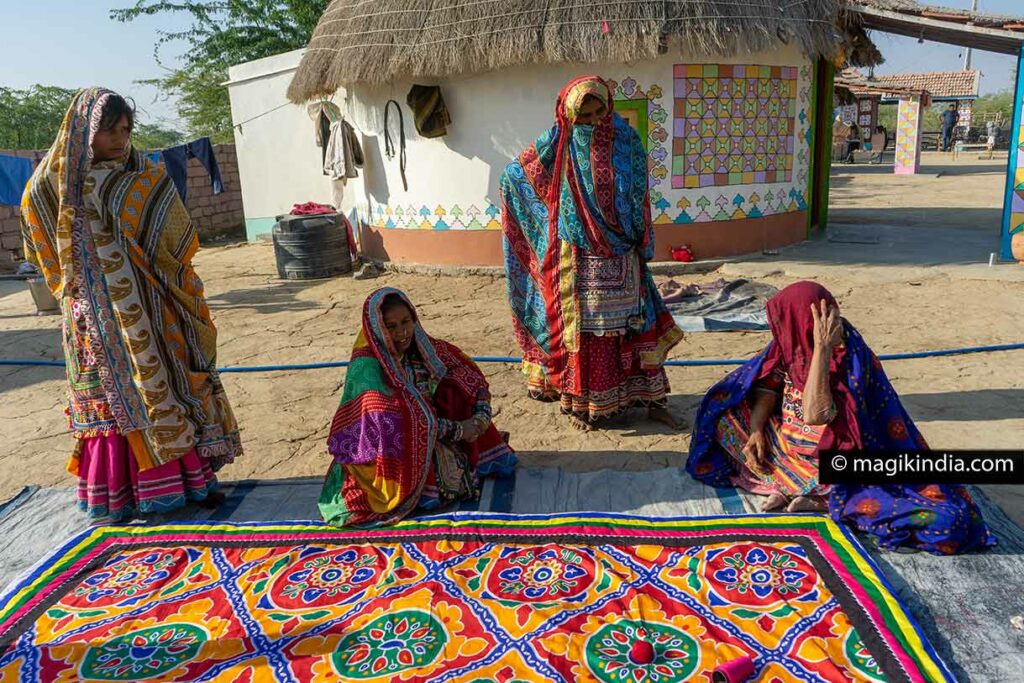
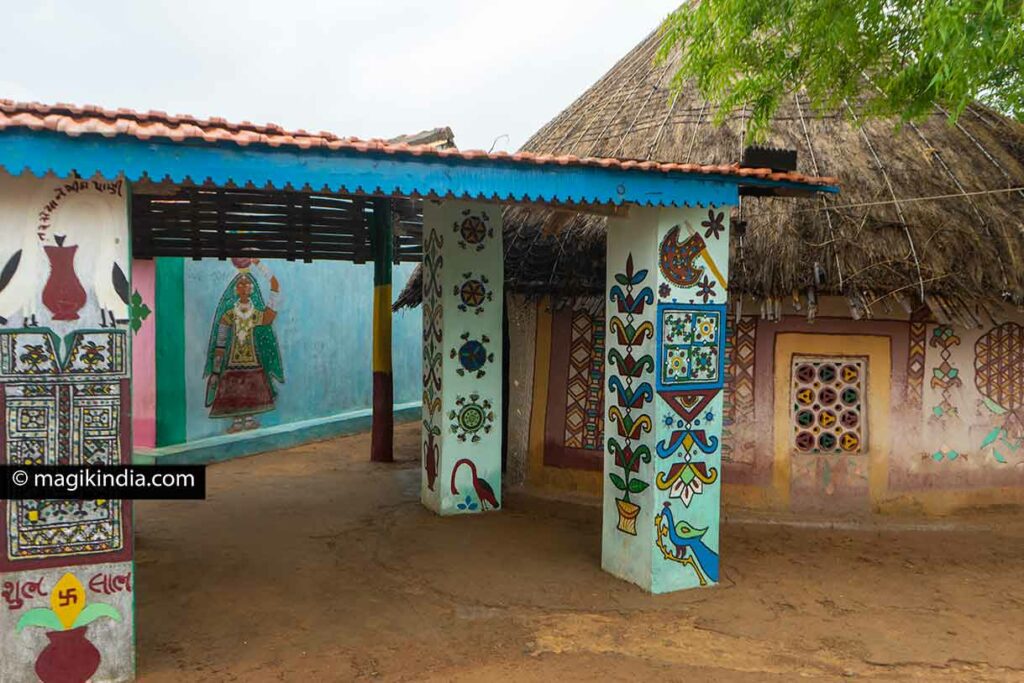
The traditional houses of the Meghwals bear the name “Bhunga” and are worthy of being featured in a fairy tale book. Standing on a raised platform, this circular hut with a conical roof is built in such a way that it can weather the desert storms that affect the unsheltered plains of this region.
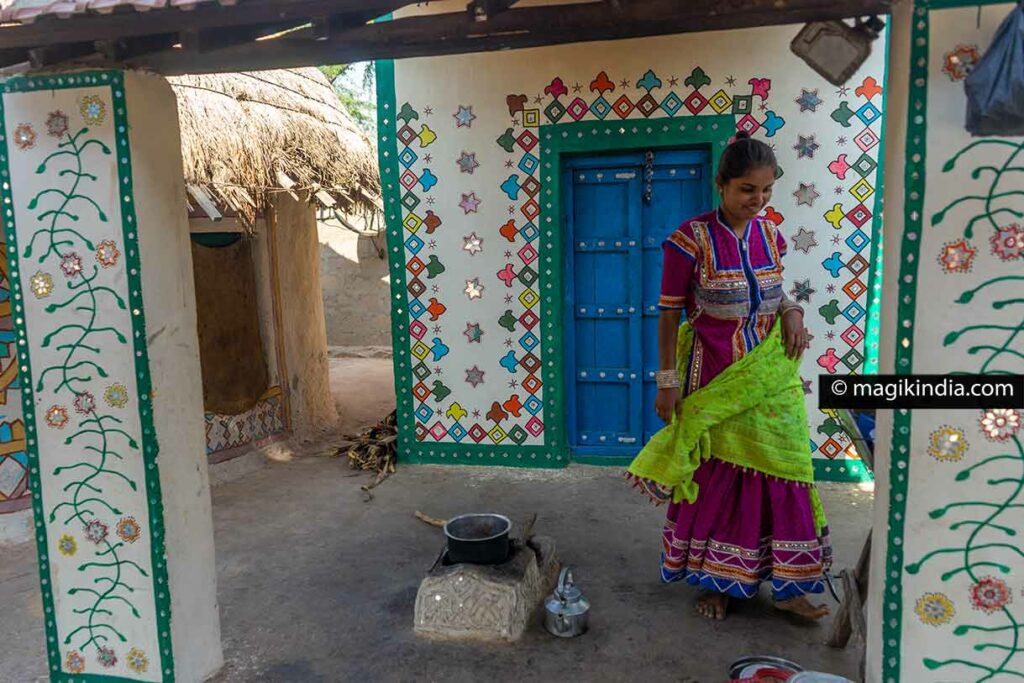
The Bhunga, which has only one circular room about 6 m in diameter, functions as a bioclimatic house that can withstand high summer temperatures as well as harsh winters. It is indeed built of mud bricks dried in the sun, the frame is covered with thatch and the interior insulation of the roof is made up of bamboos as well as dried grasses. All the materials are of course found locally.
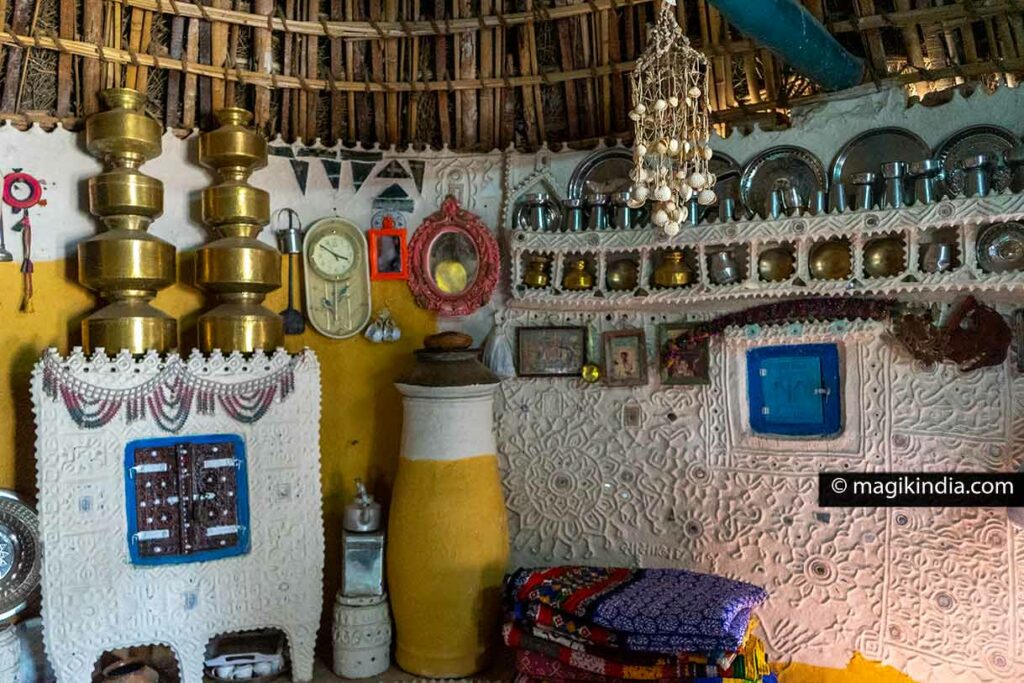
The interior of the Bhunga is simply magical. The circular wall is decorated with “lippan”, decorations in relief, shaped in the mud then covered with white clay or lime and dotted with small mosaics of mirrors… A delight for those who, like me, have kept their child’s soul!
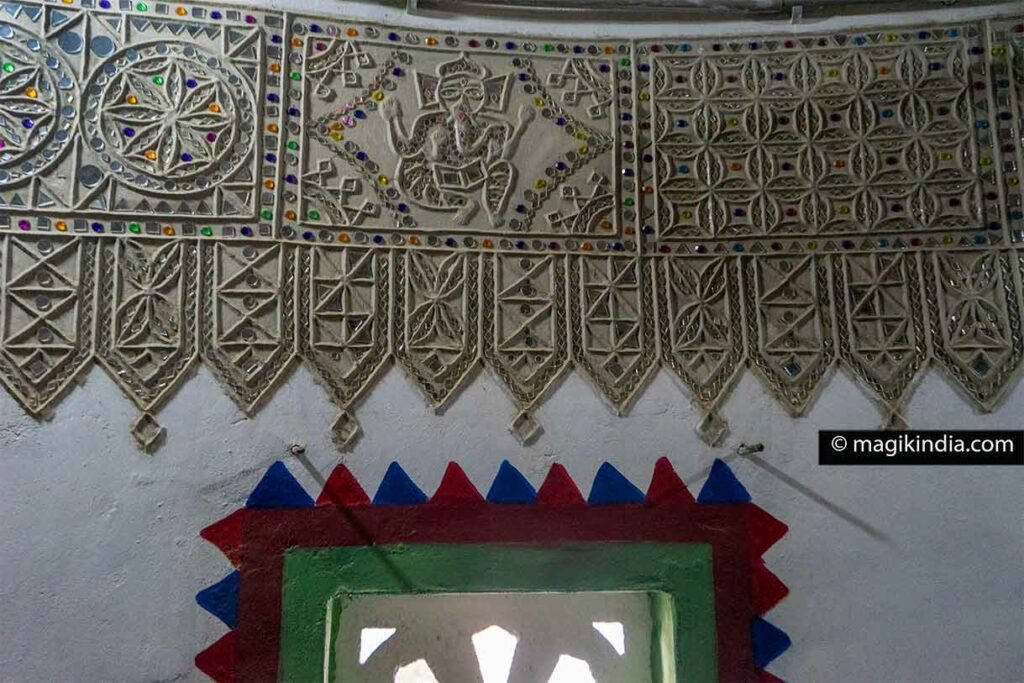
Despite a very small space, the belongings of the whole family are neatly organized along the interior circular wall. Thus, kitchen utensils rub shoulders with family photos, pious images and beauty accessories.

Jats
The Jats of Kutch are Sunni cattle herders. Originally, the Jats are believed to have lived in an area called Halaf in Iran. Five hundred years ago, these shepherds migrated from Halaf to Sindh (now Pakistan) and then to Kutch in search of new pastures. They crossed the Rann of Kutch and settled in the region of Banni; they then embarked on agriculture. The Jats of Kutch are also known for their fine embroidery work exhibited on the women’s tunic.
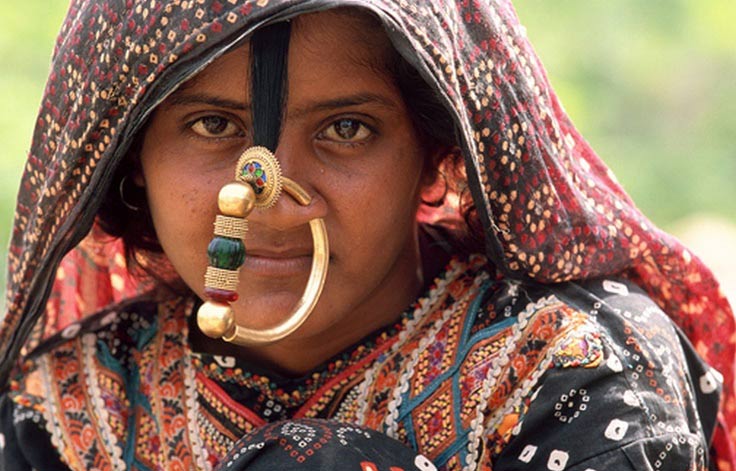
The Jats of Kutch are divided into three major groups based on where they live: the Banni Jat (Danethis or Danetha), the Kutchchi Jat (Girasias), and the Lakhpat Jat (Fakiranis). These three groups are subdivided into many sub-clans: the Badajang, Podani, Aamar, Vangayi, Mudrag, Bhallad and Hallayi to name a few.
Danetha women are distinguished by their imposing nose ring hanging from a lock of hair crossing the forehead.

The Fakiranis, the smallest of the three Jat communities, are nomads who specialize in herding camels. If the traditional clothes of men are rather banal, those of women on the other hand are distinguished by their bright colors and their bodice patterns. A long veil covers their braided hair and a nose ring and a massive silver necklace complete the outfit.

Ahirs
The Ahirs also called Yadav in other states of India consider themselves as the descendants of Lord Krishna who belonged to the Yadu clan. It is said that their ancestors lived in Mathura with Krishna and accompanied him on the way to Dwarka, the final resting place of the dark-faced god.
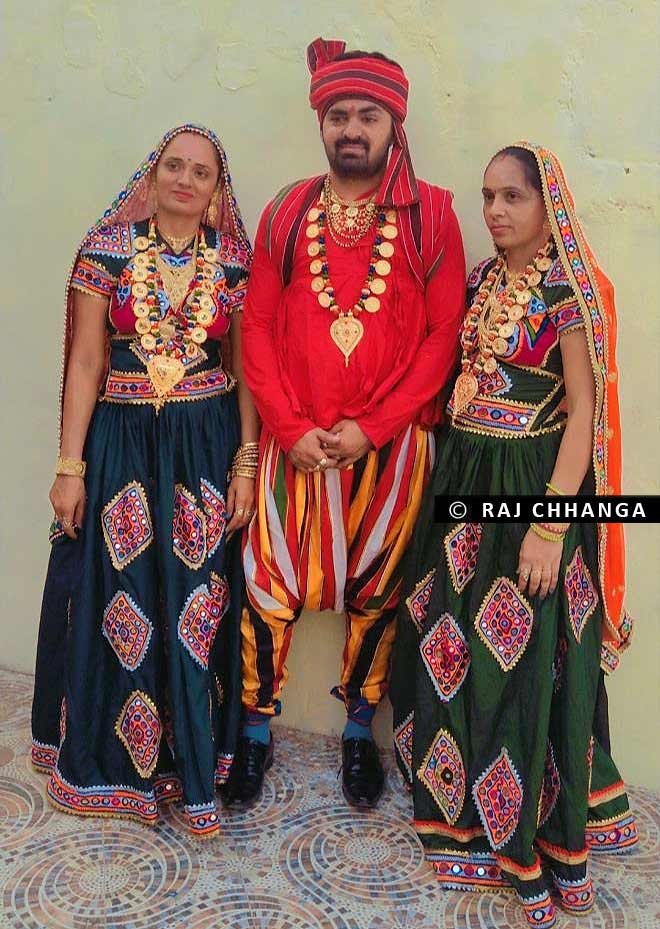
During their migration, they separated into several groups and settled in various parts of Gujarat. This is where the various subgroups within the Ahirs originated: for example, those who settled in Morbi (Saurashtra) on the banks of the Macchu River are known as the Macchoya Ahir and those inhabiting the Parathar region are the Parathadiya Ahir.
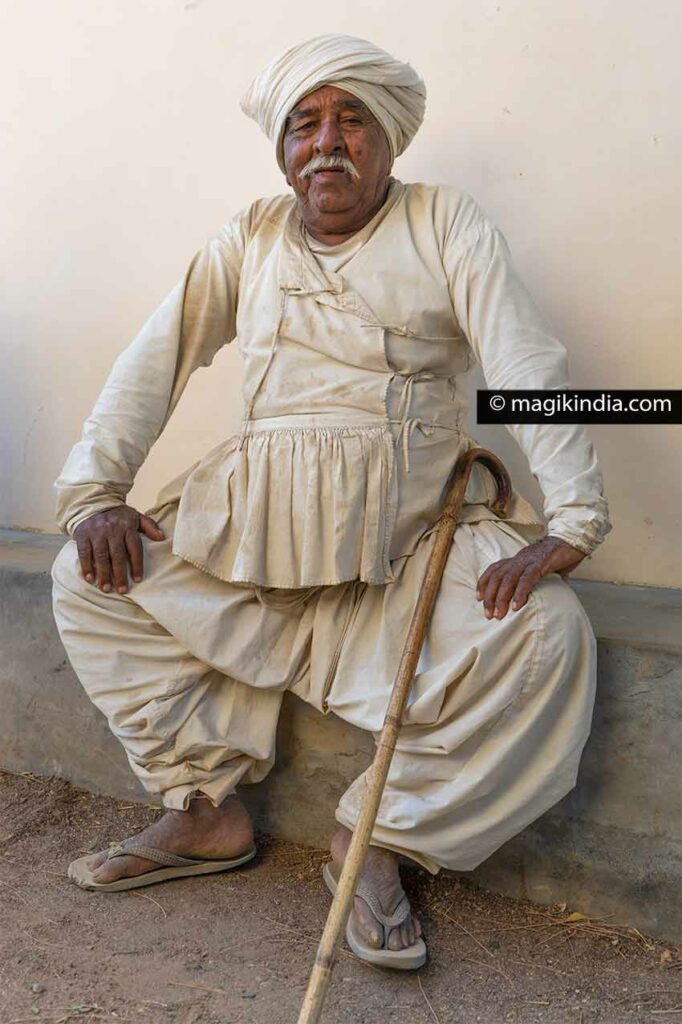
In addition to traditional activities such as agriculture and animal husbandry*, the women of this community are also known for their superb embroidery work using very bright colors with various large motifs, notably floral and the use there too of small mirrors, a recurring peculiarity in Kutch.
*At present a large part of the young Ahir generation is educated and very rarely takes over the profession of their parents.
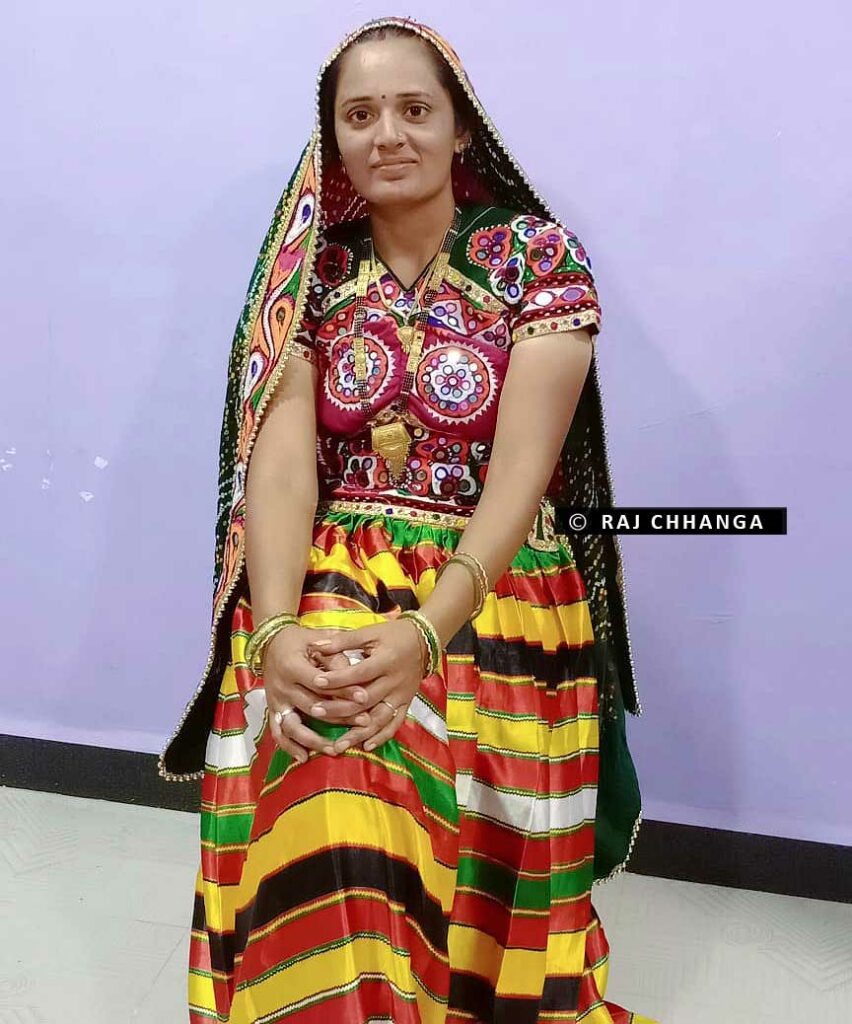
Rabaris
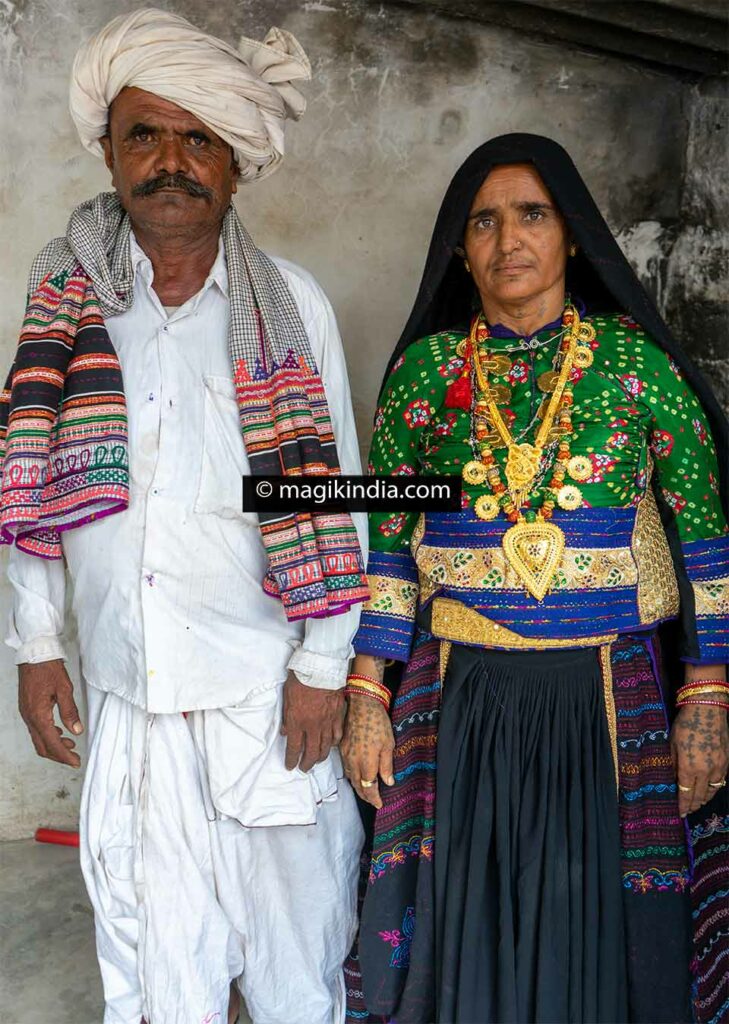
The Rabaris are surely the most emblematic people of Kutch. The exact origin of this community still remains a mystery and it is still subject to debate. Some historians believe that the Rabaris are descendants of people from the Iranian plateaus and would have migrated to India in the 4th century in the region of Marwar (Rajasthan) and then to Gujarat.
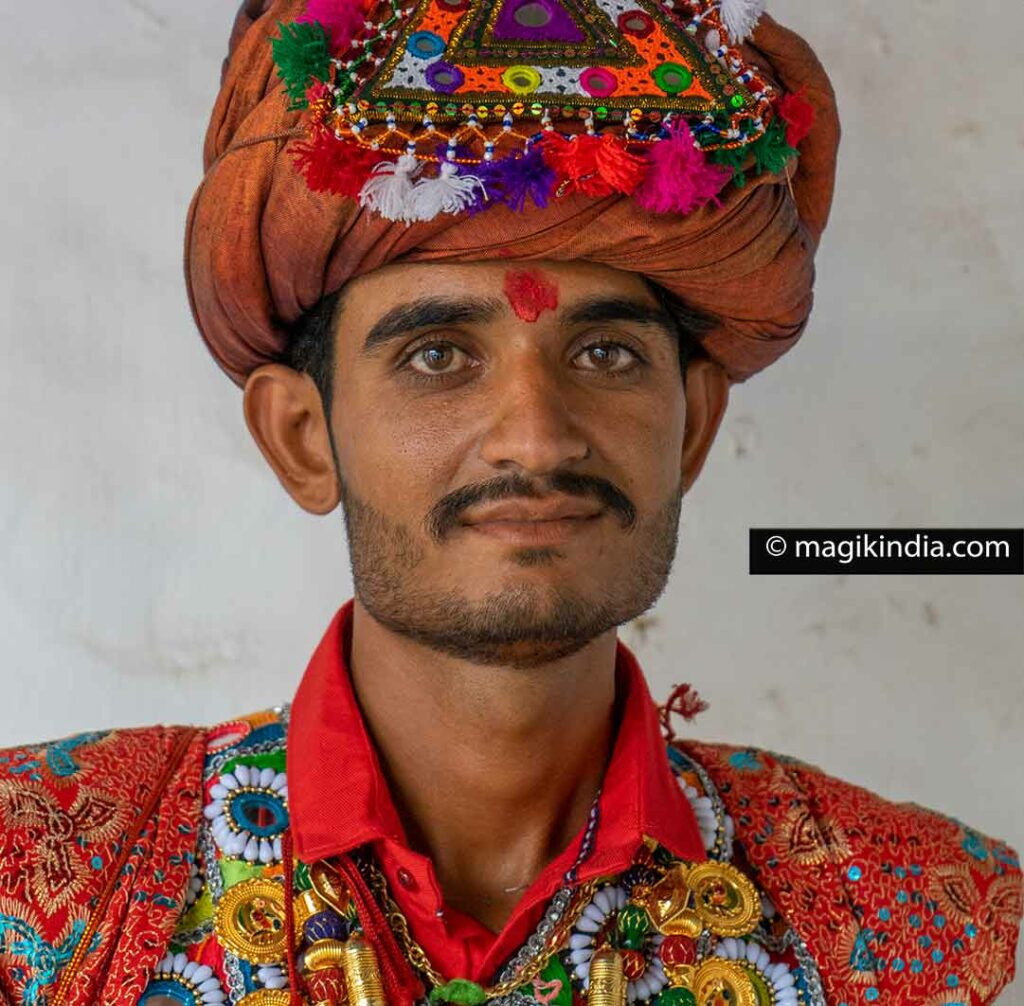
Although their origin is identical, two main groups of Rabaris can be distinguished, on the basis of geographical criteria: the Rabaris of Rajasthan (also known as Raika, Dewasi, Desai) and the Rabaris of Gujarat (northern region, Saurashtra and Kutch) simply called “Rabari”.
The two clans are themselves divided into 133 groups. In the region of Kutch, for example, there are three sub-groups of Rabaris: the Vagadiya, the Kachhi and the Dhebariya who are still semi-nomadic….
